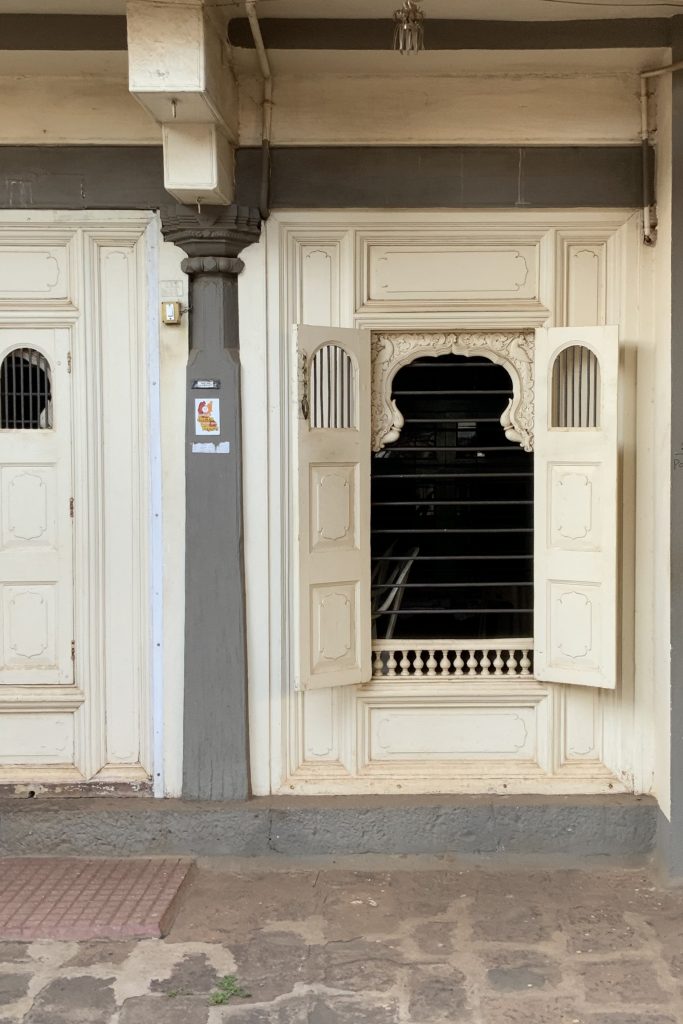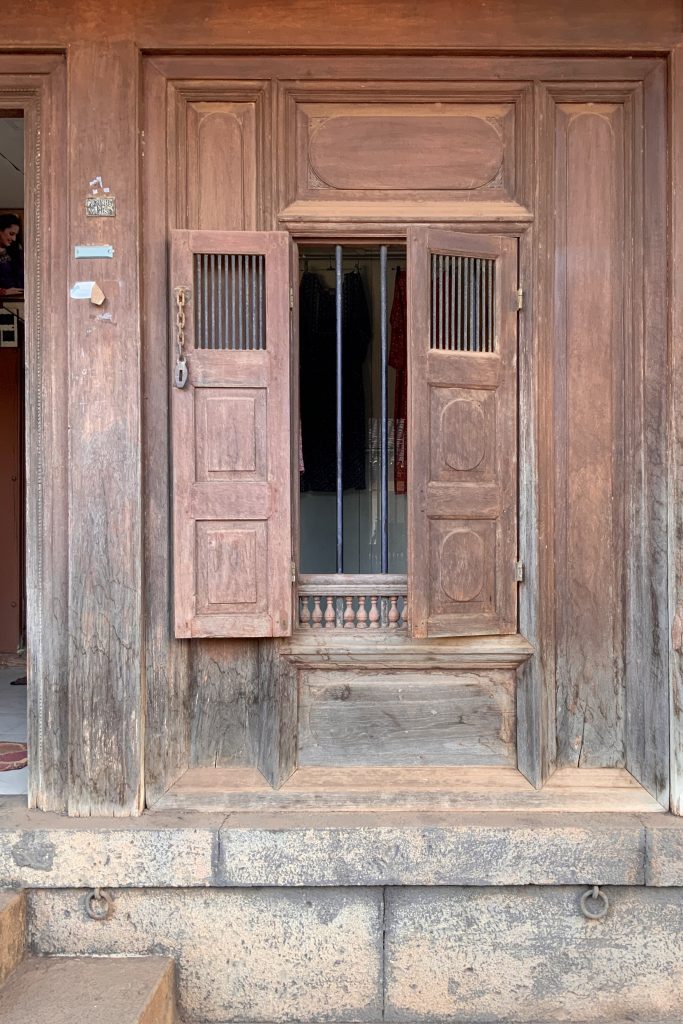Saturdays bring every Belgaonkar — or a resident of Belagavi city (also called Belgaum) — to the neighbourhood of Shahapur for the shanivaar cha bazaar (Saturday market) for fresh, seasonal agricultural produce such as bamboo shoots, mushrooms, millets and legumes from various surrounding villages. On this day, the Saraf gully, an otherwise quaint street, transforms into a riot of colours, turning into a pedestrian-only zone. If you look carefully, you will chance upon the wooden facades that act as a backdrop to the market. Residents peeping through their windows, observing the frenzy of the market, is a common sight. While most locals may overlook these largely one-storeyed houses with Mangalore tile roofs as any other ‘old’ structures in the locality, their facades tell stories of the prosperous Sangli Sansthan.
Shahapur was demarcated as a separate state within Belgaum city under the Sangli Sansthan, a province established by Chintamanrao Patwardhan in 1783 with its base in Sangli (in present-day Maharashtra). The Patwardhans entered the Peshwa service in the 18th century and rose to prominent positions in the administration. By the end of that century, as the Peshwa rule weakened, feuds within the Patwardhans intensified, and they created separate states, with Chintamanrao Patwardhan marking his jahgir (land parcel), which included Shahapur with Sangli as the administrative capital. Thus, the architectural details seen in Shahapur are largely derived from the time of the Peshwa rule. The wooden facades with ornate door frames, lightly carved column capitals, brackets and ceiling boards characterise Shahapur’s Saraf gully.
Having grown up in Belagavi and spent most of my life there, I’ve visited Shahapur quite often. Later, as a student of architecture with a keen interest in the city’s heritage, I loitered in Saraf gully with a few friends. We admired these century-old houses and what particularly caught my eye was a row of evenly spaced windows with a door. The windows were unlike any other in the city, and a recurring feature across most of the houses on this street. Turns out, these were designed to facilitate the inhabitants’ traditional occupation of moneylending, and that’s how the street gets its name — the street of the Sarafs.
While the built fabric of Shahapur harks back to the 19th- and 20th-century Patwardhan Sarkar (used synonymously with Sangli Sansthan), the cultural links can be traced to the 16th-century Adil Shahi rule. Around this time, Shahapur had a flourishing market of precious stones, giving the city’s main spine the name Khade Bazaar (market of precious stones). Even today, jewellers are prominent in Shahapur’s markets, testimony to this period in history. Interestingly, this period also coincided with the Portuguese rule in Goa. Families from Goa had migrated to neighbouring states to escape religious conversion, which was apparently what brought influential Goan Sarafs — or moneylending families — to Belgaum. This amalgamation of the jeweller Sarafs with the moneylender Sarafs became the defining character of Saraf gully.
Every window on the front facade was divided into three parts; the proportions of details designed to match the anthropometry of a person seated on a gaddi (mattress) inside the front hall, for them to be able to communicate with a person standing on the other side. Hence, while the bottom part remained panelled, the openable section of the window was lined with a small wooden railing so that the valuables kept by the moneylenders on the gaddi were out of reach of the people seeking money. Meanwhile, the space above this section — secured by grills spaced at enough distance — would facilitate the exchange of goods and money. The top portion of the window shutter had additional, smaller shutters for one to peep out, without having to open the entire window during non-working hours.
Although the windows don’t serve the purpose they were originally designed for anymore, they give us a peek into the history of Saraf gully, a reminder of the times of the Patwardhan Sarkar.
Our selection of stays across India, best visited for their design and style. Check in
Prajakta Deshpande is a conservation architect based out of Belagavi. She runs @heritageofbelgaum on Instagram and Facebook with her friends, documenting the city’s tangible and intangible heritage along with organising guided walks in several neighbourhoods.










Beautiful narrative heritage walks are extremely interesting aesthetically intriguing compels to introspect prajakta very well versed with heritage aspects would recommend these heritage walks for each and everyone
Very aptly put.. when I came to belgaum and would move around the city I too was in awe of the beautiful houses that were lined up which I hadn’t seen in Mumbai or even in the goan architecture.
Saraf katte or saraf Galli exists even in old Mysore area, Bengaluru, Davangere , Mysore have had such katte’s or gallis some 50-60 years ago…
Very beautifully explained , to add to that , just imagine the availability of timber those days and the skillful craftsmen who built these beautiful business houses, due to incessant rains these houses had steep slopes and their roofs projected quite a distance from the main wall just like a cap we wear to protect ourselves from the sun and rains , architecture was local and not copied ,material used too was local. Interestingly Belgaum is a blend of Goan( portugal), British ,and local architecture. To this day Belgaum excels in quality of construction with skilled construction workers, carpenters etc